![]()
![]()
![]()
Use LEFT and RIGHT arrow keys to navigate between flashcards;
Use UP and DOWN arrow keys to flip the card;
H to show hint;
A reads text to speech;
25 Cards in this Set
- Front
- Back
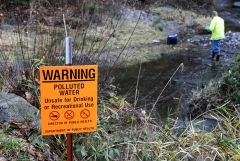
Water Pollution |
the degradation of water quality |
|
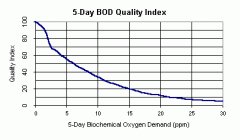
Biological Oxygen Demand (BOD) |
commonly used in water quality management |
|
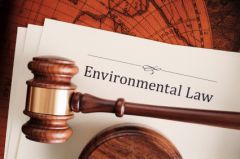
Environmental Law |
the branch of law dealing with conservation and use of natural resources and control of pollution |
|
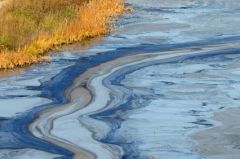
Contaminants (water) |
Any physical, chemical, biological or radiological substance or matter in water. Drinking water may reasonably be expected to contain at least small amounts of some contaminants |
|
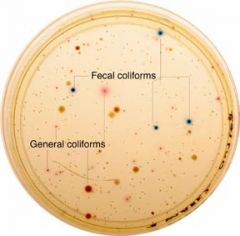
Fecal coliform bacteria |
fecal material from mammals or birds |
|

Point source pollution |
distinct and confined, such as pipes from industrial or municipal sites that empty into streams or rivers |
|

Non-point source pollution |
diffused and intermittent and are influenced by factors such as land use, climate, hydrology, topography, native vegetation, and geology |
|
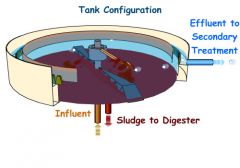
Primary Treatment |
First stage in which screens, sedimentation tanks, filters, and apparatus for skimming and chlorination is employed to remove material that floats or will settle, and pathogens that account for about 30 percent of biological oxygen demand (BOD). |
|
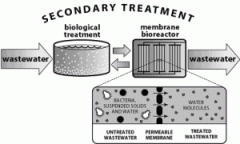
Secondary Treatment |
the stage of wastewater treatment designed to substantially degrade the biological content of the sewage. This usually uses biological processes. Municipal and industrial plants usually use aerobic biological processes. |
|
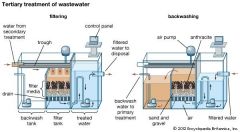
Tertiary Treatment |
Advanced cleaning of wastewater during which nutrients (such as phosphorous and nitrogen) and most suspended solids are removed. |
|
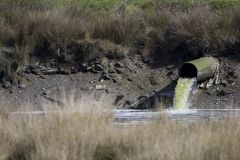
Effluent discharge |
liquid waste or sewage discharged into a river or the sea". Effluent in the artificial sense is in general considered to be water pollution, such as the outflow from a sewage treatment facility or thewastewater discharge from industrial facilities. |
|

Water Renovation and Conservation |
1. return of treated wastewater to crops 2. renovation or natural purification by slow percolation of the wastewater into soil to eventually recharge the groundwater resource with clean water 3. reuse of the treated water |
|
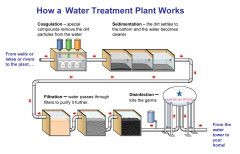
Wastewater treatment |
primary, secondary, advanced, chlorine (primary and secondary required by law) |
|
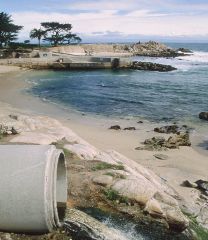
Runoff |
the draining away of water (or substances carried in it) from the surface of an area of land, a building or structure, etc. |
|
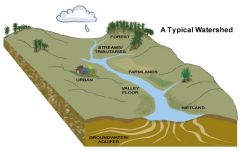
Watershed |
an area or ridge of land that separates waters flowing to different rivers, basins, or seas. |
|
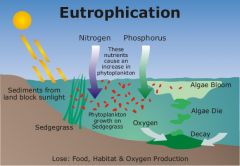
Eutrophication |
the process by which a body of water develops a high concentration of nutrients, natural process |
|
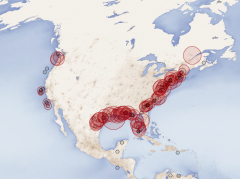
Dead Zone(s) |
an area of the ocean that is depleted of oxygen, frequently due to pollution. |
|
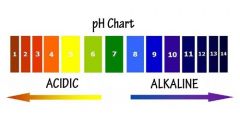
pH |
pH is a measure of hydrogen ion concentration; a measure of the acidity or alkalinity of a solution. Aqueous solutions at 25°C with a pH less than seven are acidic, while those with a pH greater than seven are basic or alkaline. |
|
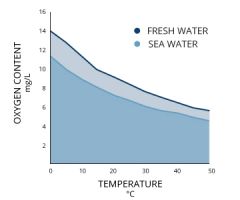
Dissolved Oxygen |
refers to microscopic bubbles of gaseous oxygen (O2) that are mixed in water and available to aquatic organisms for respiration—a critical process for almost all organisms. Primary sources of DO include the atmosphere and aquatic plants. |
|
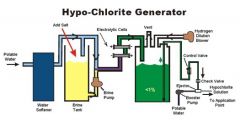
Chlorinaiton |
the process of adding chlorine (Cl 2) or hypochlorite to water. |
|
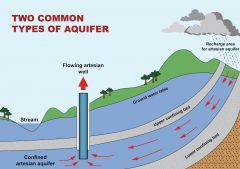
Aquifer |
An aquifer is an underground layer of water-bearing permeable rock, rock fractures or unconsolidated materials (gravel, sand, or silt) from which groundwater can be extracted using a water well. The study of water flow in aquifers and the characterization of aquifers is called hydrogeology. |
|
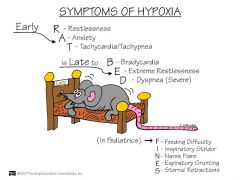
Hypoxia |
oxygen deficiency in a biotic environment |
|
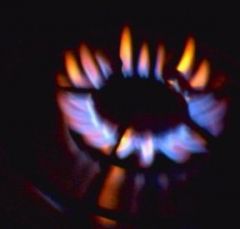
Methane Gas |
Methane is an odorless, colorless flammable gas. It is used primarily as fuel to make heat and light. It is also used to manufacture organic chemicals. Methane can be formed by the decay of natural materials and is common in landfills, marshes, septic systems and sewers. |
|
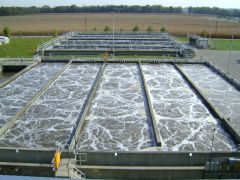
Activated Sludge |
The activated sludge process is a process for treating sewage and industrial wastewaters using air and a biological floc composed of bacteria and protozoa. |
|

Leachate |
water that has percolated through a solid and leached out some of the constituents.
|

